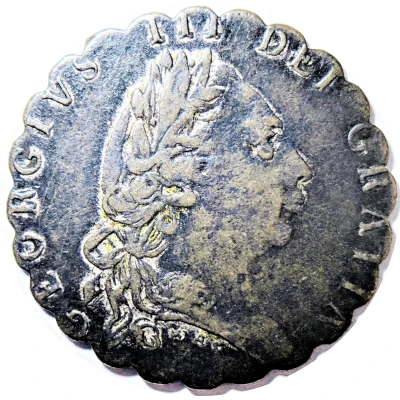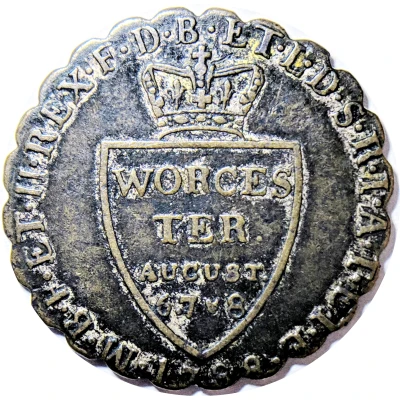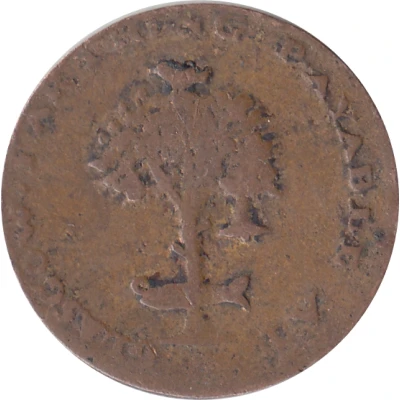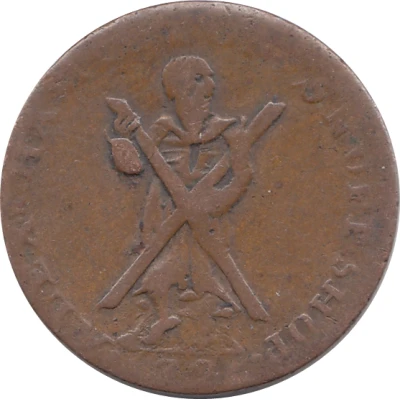


© geostring
1 Farthing Worcestershire - Worcester
1788 year| Brass plated copper | 3.9 g | 25 mm |
| Issuer | United Kingdom (United Kingdom, British Overseas Territories and Crown Dependencies) |
|---|---|
| King | George III (1760-1820) |
| Type | Token |
| Year | 1788 |
| Value | 1 Farthing (1⁄960) |
| Currency | Conder tokens (1787-1797) |
| Composition | Brass plated copper |
| Weight | 3.9 g |
| Diameter | 25 mm |
| Shape | Scalloped |
| Technique | Milled |
| Orientation | Medal alignment ↑↑ |
| Demonetized | Yes |
| Updated | 2024-10-08 |
| Numista | N#285692 |
|---|---|
| Rarity index | 92% |
Reverse
Crowned shield with lettering across four lines, legend around
Script: Latin
Lettering:
M . B . F . ET . H . REX . F . D . B . ET . L . D . S . R . I . A . T . ET . E .
WORCES
TER .
AUGUST .
6 .7 & 8 .
1788.
Translation: King of Great Britain, France and Ireland, Defender of the Faith, Duke of Brunswick and Luneburg, Arch Treasurer and Elector of the Holy Roman Empire.
Comment
Commemorating the visit of King George III to the city of Worcester on 6th August 1788.Dalton & Hamer lists four varieties of this type:
DH#33 period after GRATIA spaced from bust
DH#34 period after GRATIA nearer the bust
DH#35 the third leaf points to first numeral
DH#36 the second leaf points to third numeral
Interesting fact
One interesting fact about the Token 1 Farthing (Worcestershire - Worcester) 1788 from United Kingdom is that it was issued during a time of severe coinage shortages in the late 18th century. The British government was unable to produce enough coins to meet the demands of the growing economy, leading to the issuance of private tokens, like this one, by local merchants and traders. These tokens were used as a substitute for official currency and were often backed by the merchant's personal credit. This particular token was issued by a merchant in Worcester, Worcestershire, and features a unique design, including an image of a shield with a cross and a crown, and the inscription "Worcester Farthing 1788." Despite being made of brass plated copper, which was a less valuable material than the coins issued by the royal mint, these tokens played an important role in facilitating trade and commerce during a time of economic hardship.



